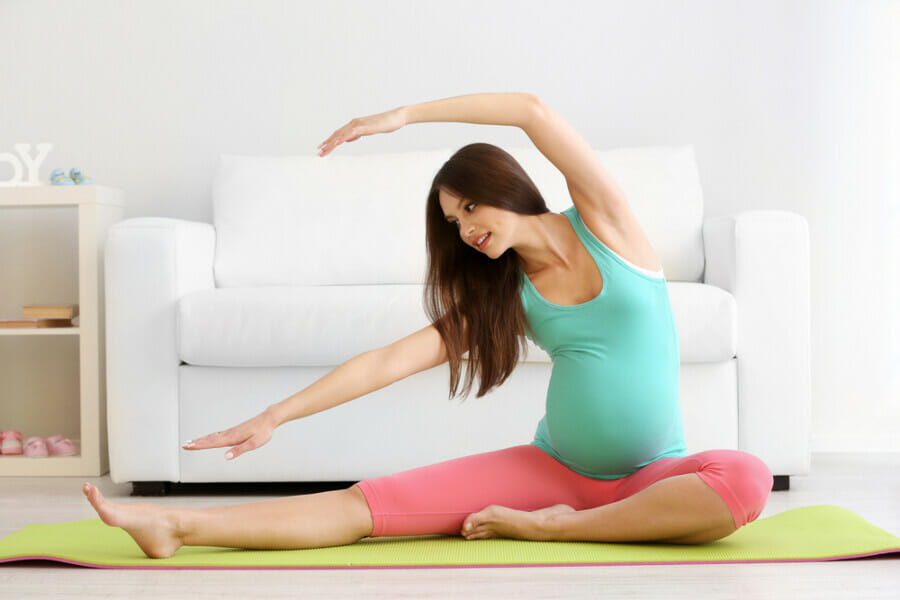Exercises That Benefit Pregnant Women in Labor and Delivery
Do you remember the storyline from Sex and the City where Charlotte York, who thought she could never get pregnant, worried about giving up her love for running after conceiving? Though it may seem trivial to some, for individuals carrying a baby, the idea of exercising during pregnancy can be a challenge – not just because the baby bump can interfere with certain movements.
During this phase of life, pregnant individuals are often advised to “stay active” or to “take a prenatal yoga class,” with minimal guidance on how to actually engage in physical activity. Which exercises can help prepare for labor? We consulted prenatal fitness experts, an OB/GYN, and a pelvic health physical therapist to understand the benefits of staying active during pregnancy and ways to incorporate movement to reap those rewards.
The Significance of Movement During Pregnancy
Undoubtedly, childbirth is no easy feat. Brooke Cates, a prenatal and postnatal exercise specialist and the CEO of The Bloom Method, was once informed by one of her exercise science professors that an average person in labor expels three times the amount of oxygen a runner expels during a marathon. “If most people wouldn’t show up to a marathon untrained, why should we expect pregnant women to go through birth unprepared?” she questions.
Cates, also a core rehabilitation specialist, recommends a comprehensive training regimen that emphasizes both strength and mobility exercises for labor preparation. She highlights the importance of training essential muscle groups during pregnancy such as glutes, core (including the pelvic floor), quads, hamstrings, adductors, biceps, shoulders, and upper back muscles.
“Labor is an athletic event,” says Megan Roup, the founder of The Sculpt Society, who developed the TSS MAMA prenatal program. “As long as you have clearance from your doctor, the focus should be on moving in a way that enhances strength and endurance.”
Charlotte might have been hesitant to maintain her running routine, but with the right exercises – and approval from your doctor – it can greatly benefit your pregnancy and birthing experience.
Six Exercises for Labor Preparation
1. Pelvic Floor Exercises with 360 Breathing
During pregnancy and labor, the pelvic floor muscles undergo significant stress. OB/GYN Dr. Staci Tanouye suggests pelvic floor exercises like kegels as a priority. These exercises not only help with muscle control and urination but also contribute to overall pelvic health. Incorporating 360 breathing alongside these exercises can aid in preparing for contractions during labor.
What is 360 breathing? It is a technique that places the body in a relaxed state, offering natural pain relief and preparing the pelvic floor for the pushing phase of birth. Regular practice can potentially help prevent severe tearing.
2. Squat Variations
While kegels are vital for pelvic floor strength, focusing on the glutes is equally important. Glute strength enhances pelvic stability, aids in preventing common pregnancy discomforts, prepares for labor, and strengthens the core and pelvic floor. Squats are an effective way to target the glutes and are functional in daily life.
The method of performing squats during pregnancy varies based on individual strength levels and medical advice. Consult your doctor to determine the most suitable approach for you.
3. Rows
Incorporating rows into your prenatal and postnatal fitness routines can help alleviate discomfort resulting from postural misalignment caused by a growing belly. Training the posterior chain during pregnancy is crucial for reducing discomfort and maintaining proper posture.
4. Deadlifts
Besides targeting the glutes, deadlifts also engage the hamstrings, promoting pelvic stability and improved posture. This exercise contributes to training both the lengthening and contracting phases of the pelvic floor muscles, preparing them for labor.
5. Shoulder Presses and Bicep Curls
In addition to focusing on muscles directly involved in labor, consider strengthening muscles needed post-birth, such as those necessary for holding the baby and maintaining posture during breastfeeding. Recommendations include shoulder presses and bicep curls, which can be adapted to different fitness levels and performed in various ways.
6. Mobility Work
Enhancing mobility and flexibility is beneficial for labor and postnatal recovery. Include exercises like chest openers, 90/90 stretches targeting the hips, figure-4 stretches beneficial for both hips and glutes, and isometric deep birth squats to prepare the key muscles and joints for labor.
Exercises to Avoid During Pregnancy
While staying active is generally encouraged during pregnancy, some exercises are typically not recommended.
High-risk contact sports like soccer or basketball should be avoided due to the risk of unintended contact causing pregnancy complications. As the pregnancy progresses, activities with a risk of falling should also be discontinued.
When to Refrain from Exercising
Though most individuals can engage in exercise during pregnancy, there are specific circumstances where it is advised against. Instances like bleeding or spotting, hyperemesis gravidarum, polyhydramnios, placenta previa, preeclampsia, high blood pressure, and cervical issues are reasons to limit or avoid exercise. Always consult your doctor before starting any exercise regimen.
Final Note
According to Roup, there’s no need to fear cardio during pregnancy if approved by your doctor and if it feels comfortable. Listen to your body, make modifications as needed, and find a movement routine that suits you. While a certified pre- or postnatal instructor isn’t mandatory, they can significantly enhance your pregnancy journey, offering a more empowered birth experience.













